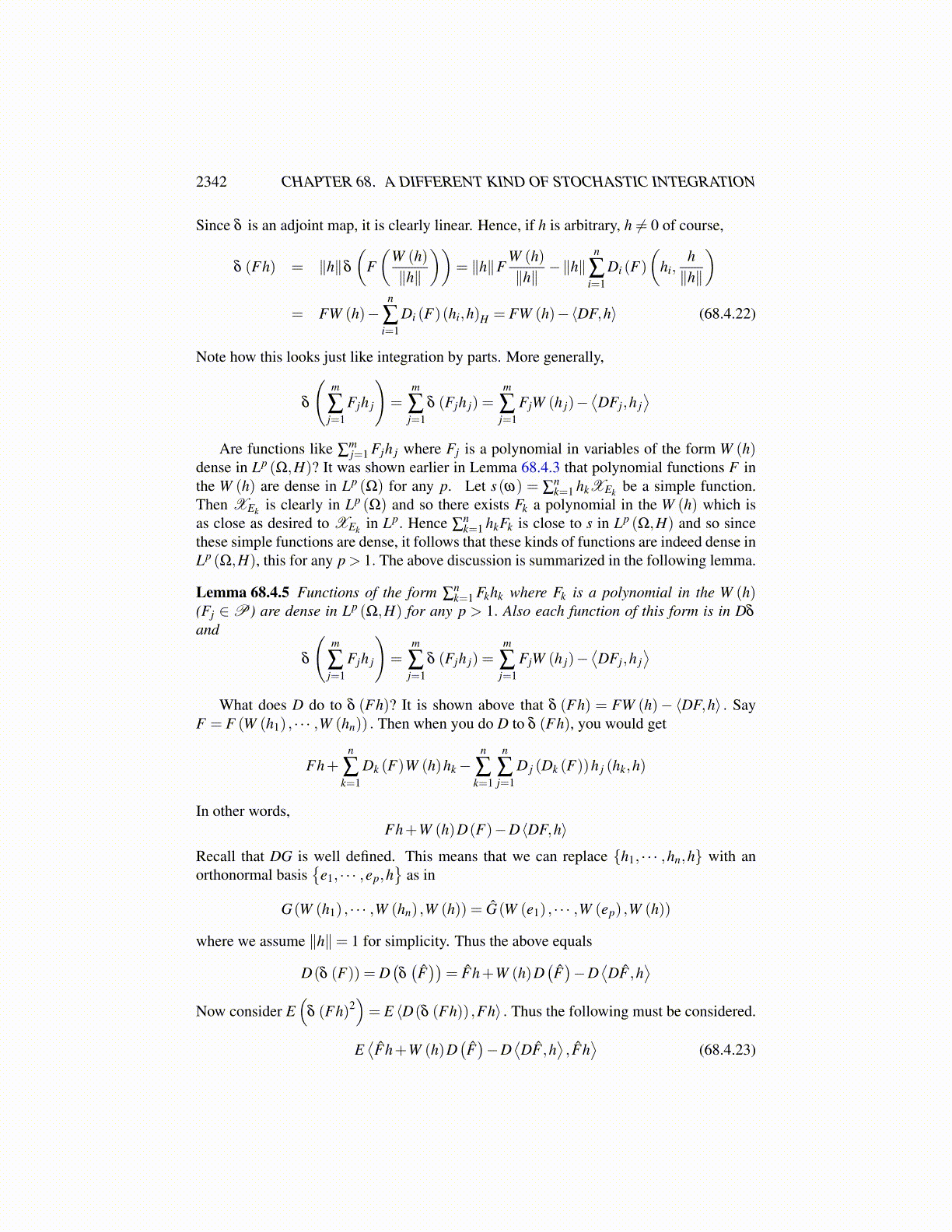
2342 CHAPTER 68. A DIFFERENT KIND OF STOCHASTIC INTEGRATION
Lemma 64.6.4, for a given h, there is a sequence of functions of P,{ fn} which convergesto eW (h) in Lp (Ω). It follows that∫
Ω
geW (h)dP = limn→∞
∫Ω
g fndP = 0
Hence by Lemma 64.6.5 it follows that g = 0. Hence P is dense in Lp (Ω).Let D1,p denote the closure in Lp (Ω) of functions in P with respect to the seminorm
∥ f∥1,p ≡(∥ f∥p
Lp(Ω)+∥D f∥p
Lp(Ω,H)
)1/p
By this we mean the following. The above ∥ f∥1,p makes perfect sense for every f ∈P andis algebraically like a norm. Thus it makes P into a normed linear space. D1,p is just thecompletion of this normed linear space. Then for f ∈D1,p, we define D f ≡ limn→∞ D fn inLp (Ω,H) where fn ∈P .
68.4.2 The IntegralThe derivative has been defined above. Now here is the definition of the integral defined onfunctions in Lp′ (Ω,H), possibly not all of them.
Definition 68.4.4 We say a random variable F is “smooth” if it is of the form F (ω) =F (W (h1) , · · ·W (hr)) where x→ F (x) is a smooth function of the real variables xi. It haspolynomial growth if
|F (x)|(1+ |x|2
)m
is bounded for some positive integer m. Let u ∈ Lp′ (Ω,H) . Then u ∈ D(δ ) if for all Fsmooth having polynomial growth in the W (h) ,
|E ⟨DF,u⟩| ≤C (u)∥F∥Lp(Ω)
Then δu ∈ Lp′ (Ω) is defined by
E ⟨DF,u⟩ ≡ E (Fδu)
Thus you have δ is the adjoint of D.
Lp′ (Ω)δ← D(δ )⊆ Lp′ (Ω,H)
Lp (Ω)⊇ D(D)D→ Lp (Ω,H)
Next it is shown that there are functions in D(δ ) by giving examples of them. It turnsout that functions of the form ∑i Fihi where Fi is smooth with polynomial growth are inD(δ ). Consider
E ⟨DG,F (W (h1) , · · · ,W (hn))h⟩